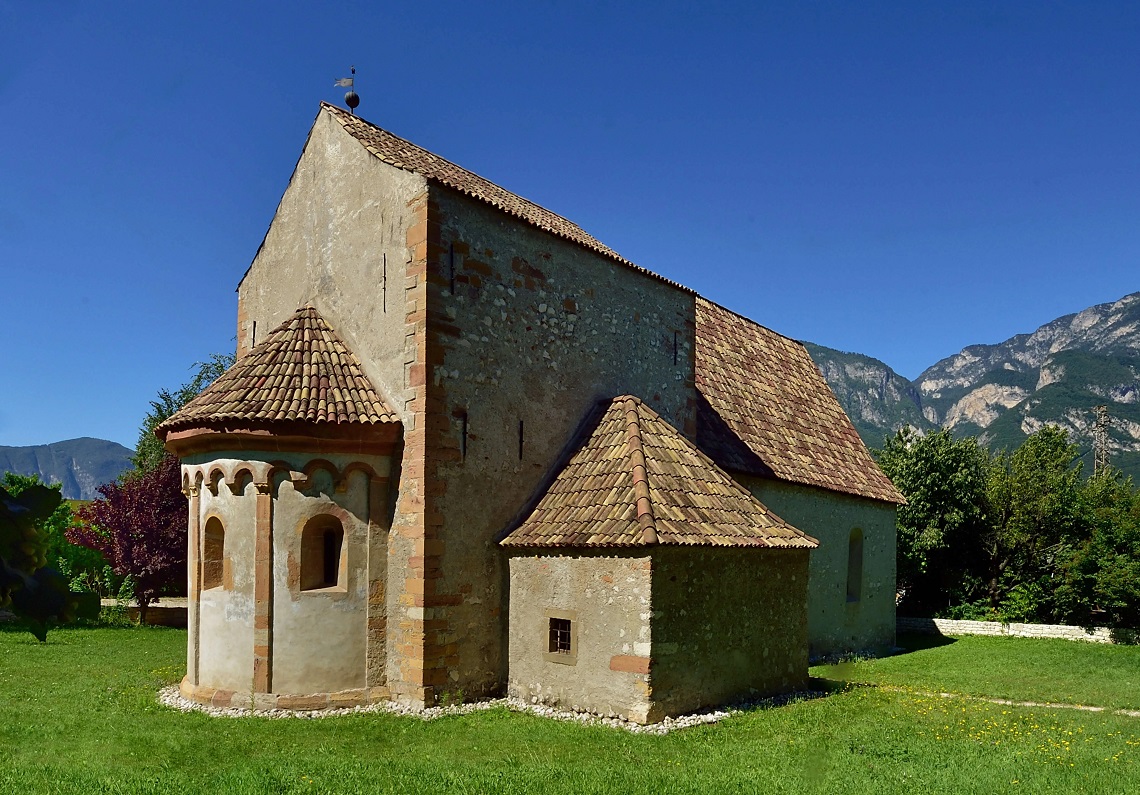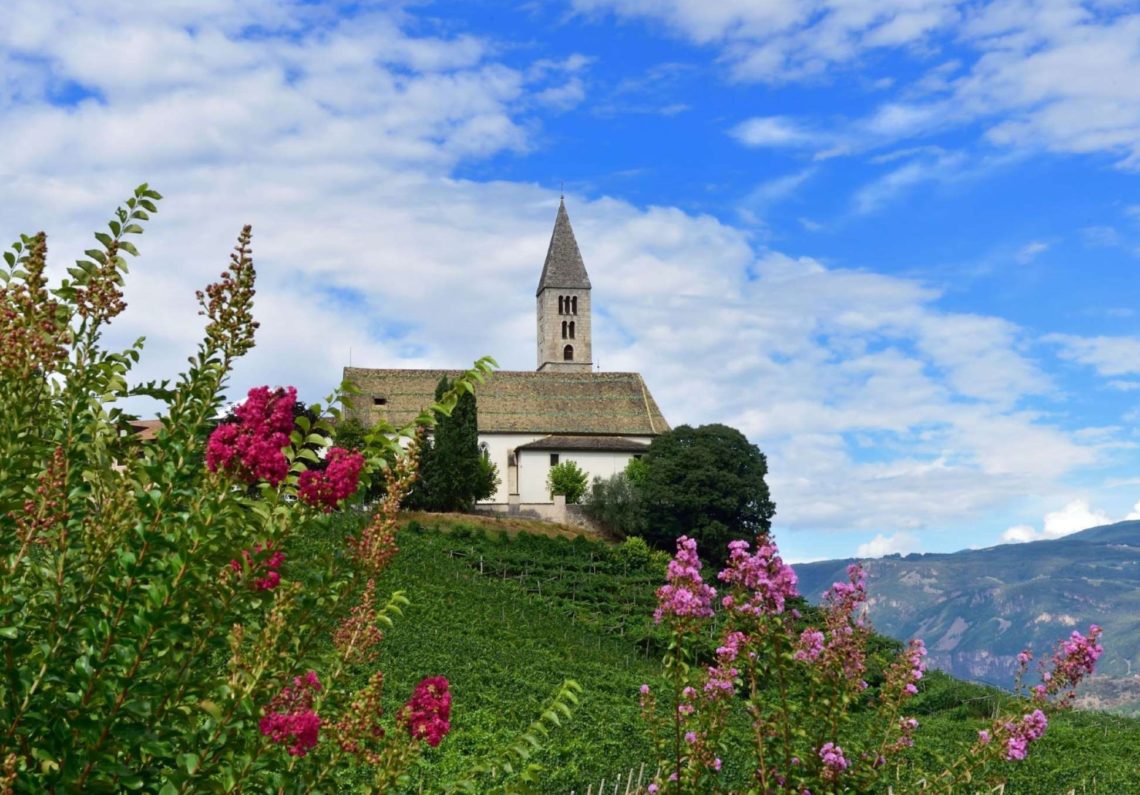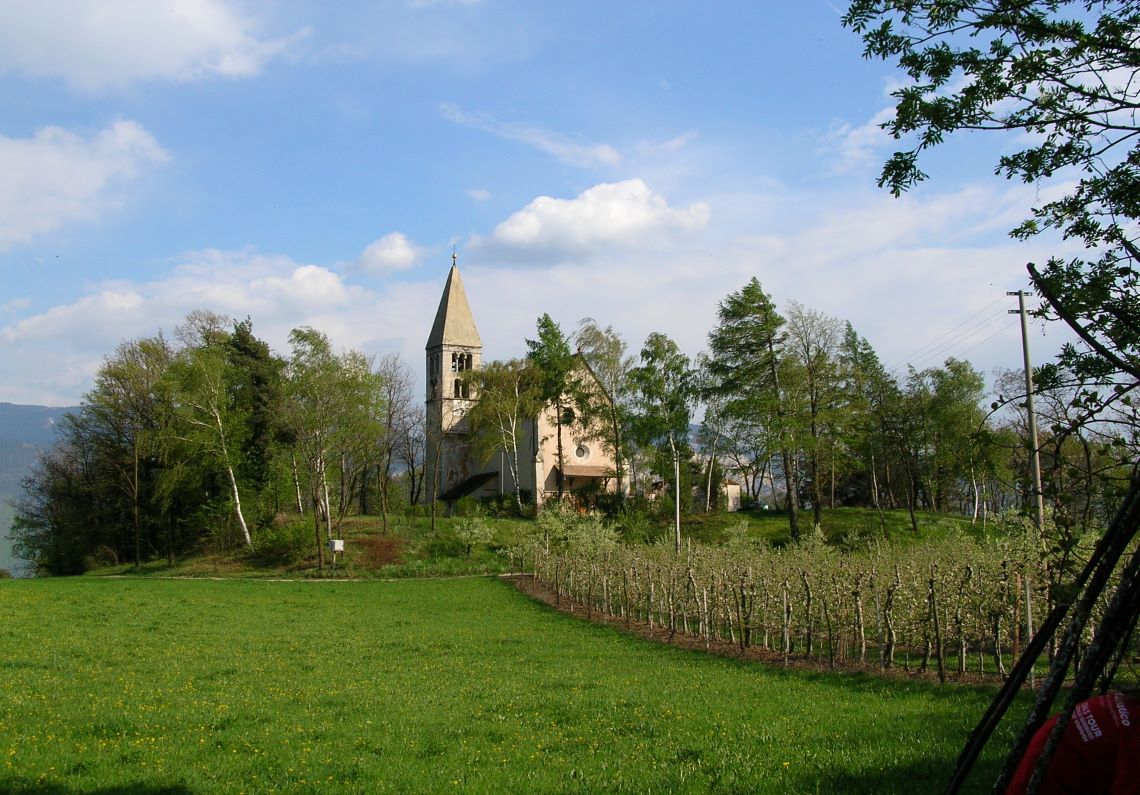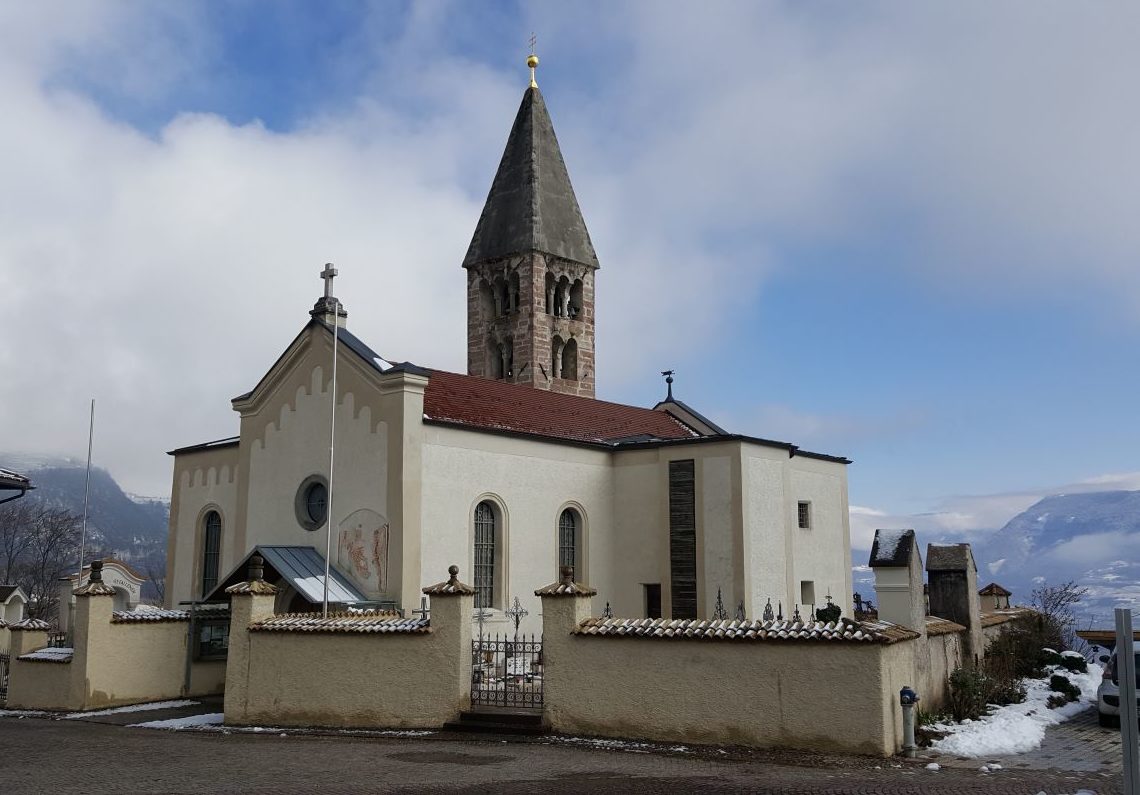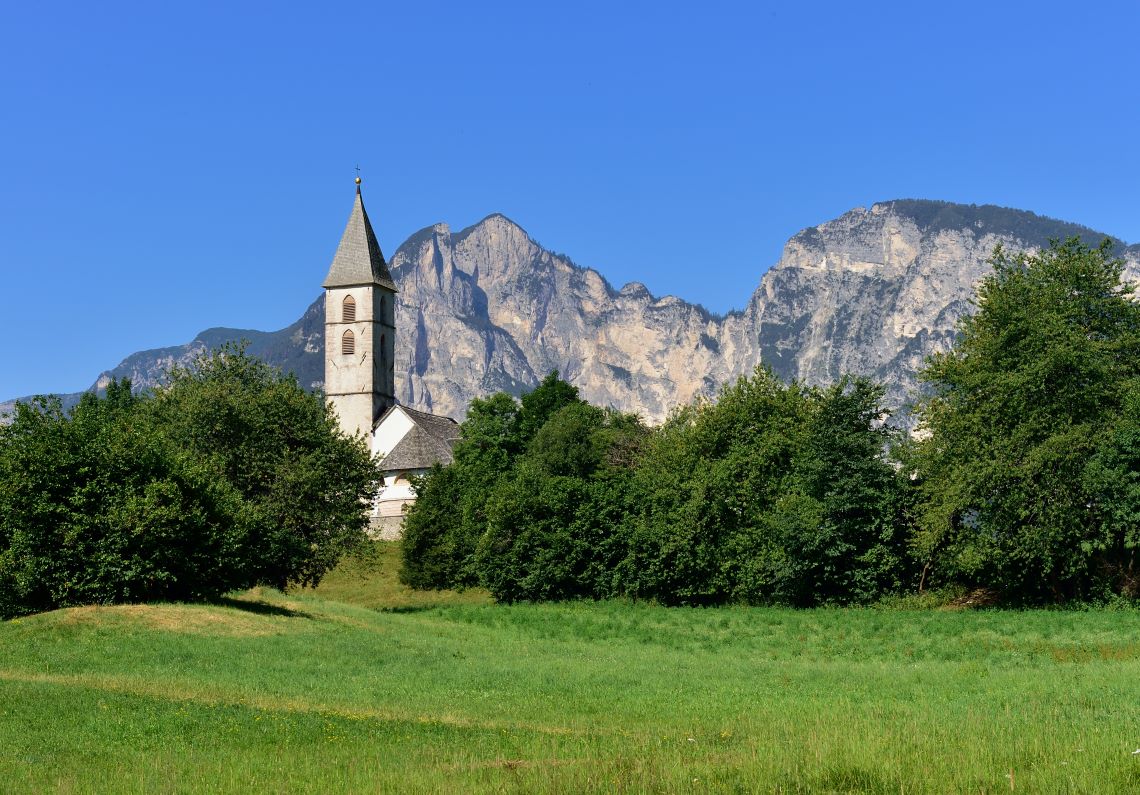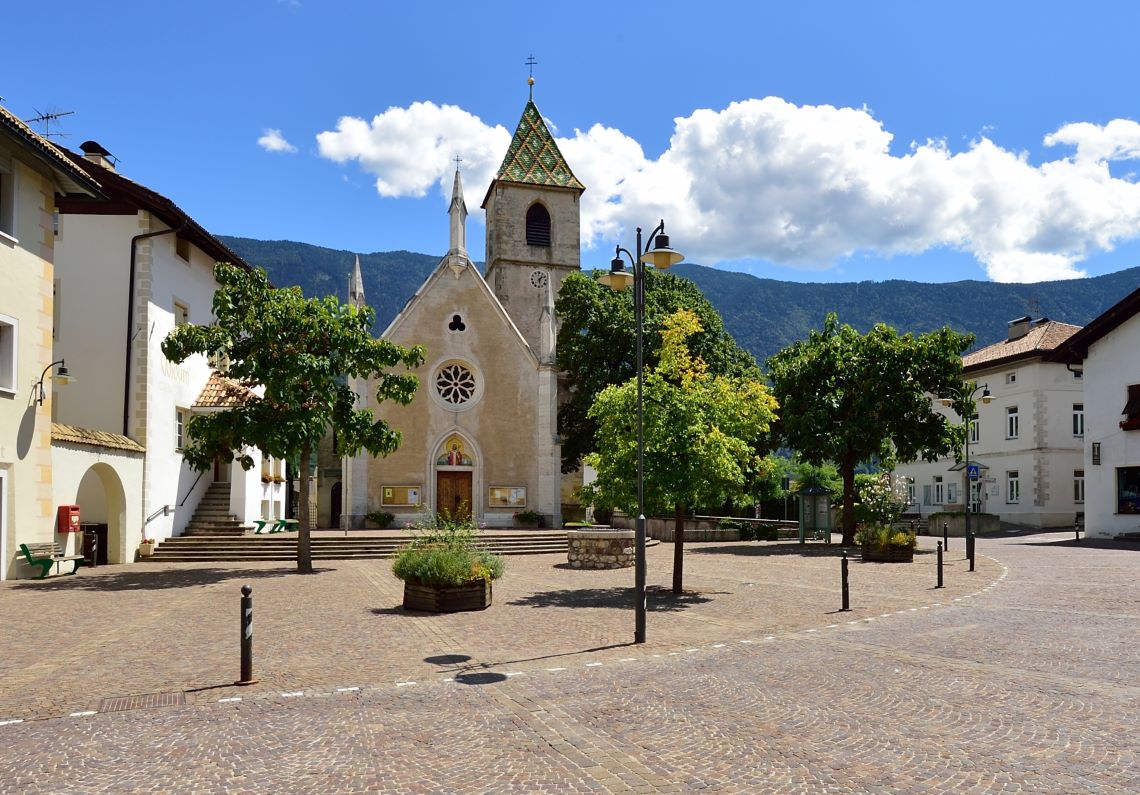Churches in
Kurtatsch, Margreid und Kurtinig
In each village or parish there is a church, several chapels and various stations of the cross or wayside shrines. The church year is framed by various processions and celebrations.
Curch Saint Florian
The mother church of Margreid and Kurtinig was probably built between the 9th and 10th Century A.D. The architecturally interesting church has been renovated and can now be visited on request.
Saint Vigilius parish church
The Saint Vigilius parish church, first mentioned in 1337, with its Baroque high altarpiece of the martyrdom of Saint Vigilius, is one of the places worth seeing in Kurtatsch.
Legend has it that the oil painting of the Painful Mother of God ‘wept’ from 28th November 1733 to 17th July of 1738. (Confirmed by the church committee.) Since then, every year, many Christians undertake pilgrimages to this miraculous image. The oldest date, 1003 – MXXXIII, decorates the old baptismal font inside the church. The Roman church tower was probably built around 1300.
Church of Saint Georg, Graun
The late gothic parish church in Graun is dedicated to St. George and dates from the middle of the 15th century.
Day of consecration: 23 April
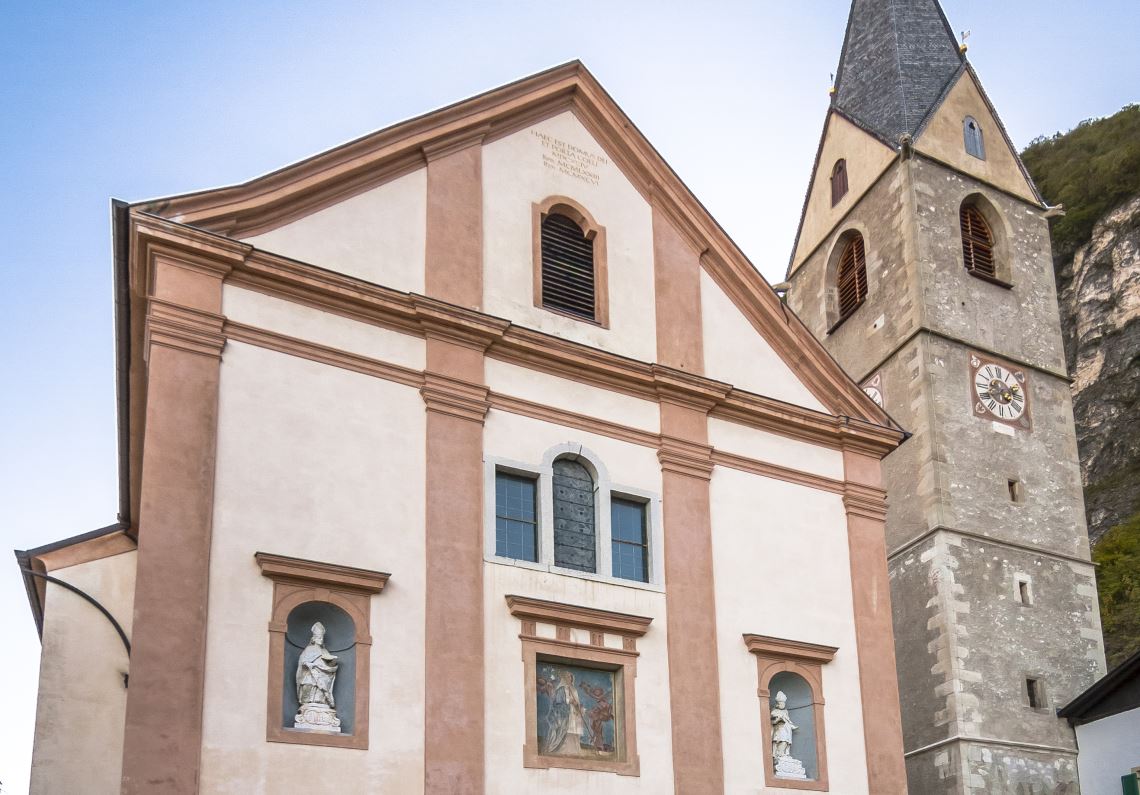
Church of Saint Gertrud, Margreid
The current parish church of St. Gertrud in Margreid was built in the second half of the 17th century. It is one of the most important new sacred baroque buildings in the lowlands of South Tyrol (Unterland). It stands on various remains of building that date back to the 13th century.
Church dedication day: March 17th
Church of Saint Leonhard, Unterfennberg
The small Leonhardskirche of Unterfennberg dates from the 13th century. Around the idyllic church of the Roman Saint Leonard, there is an iron chain, which – according to the legend – grows one link every seven years. As soon as the chain is long enough to surround the church three times, the world is supposed to come to an end.
Church of Saint Martin, Kurtinig
The parish church in Kurtinig was built in 1462. Since then the Kurtinians have lived in the centre of the valley near the meandering Adige river. They were often cut off from the church in St. Florian due to the flooding of the Adige, and so after 1539, they could keep the Eucharist in the church. They were also given their own cemetery and could build their own baptismal font.
Church dedication day: November 11th
